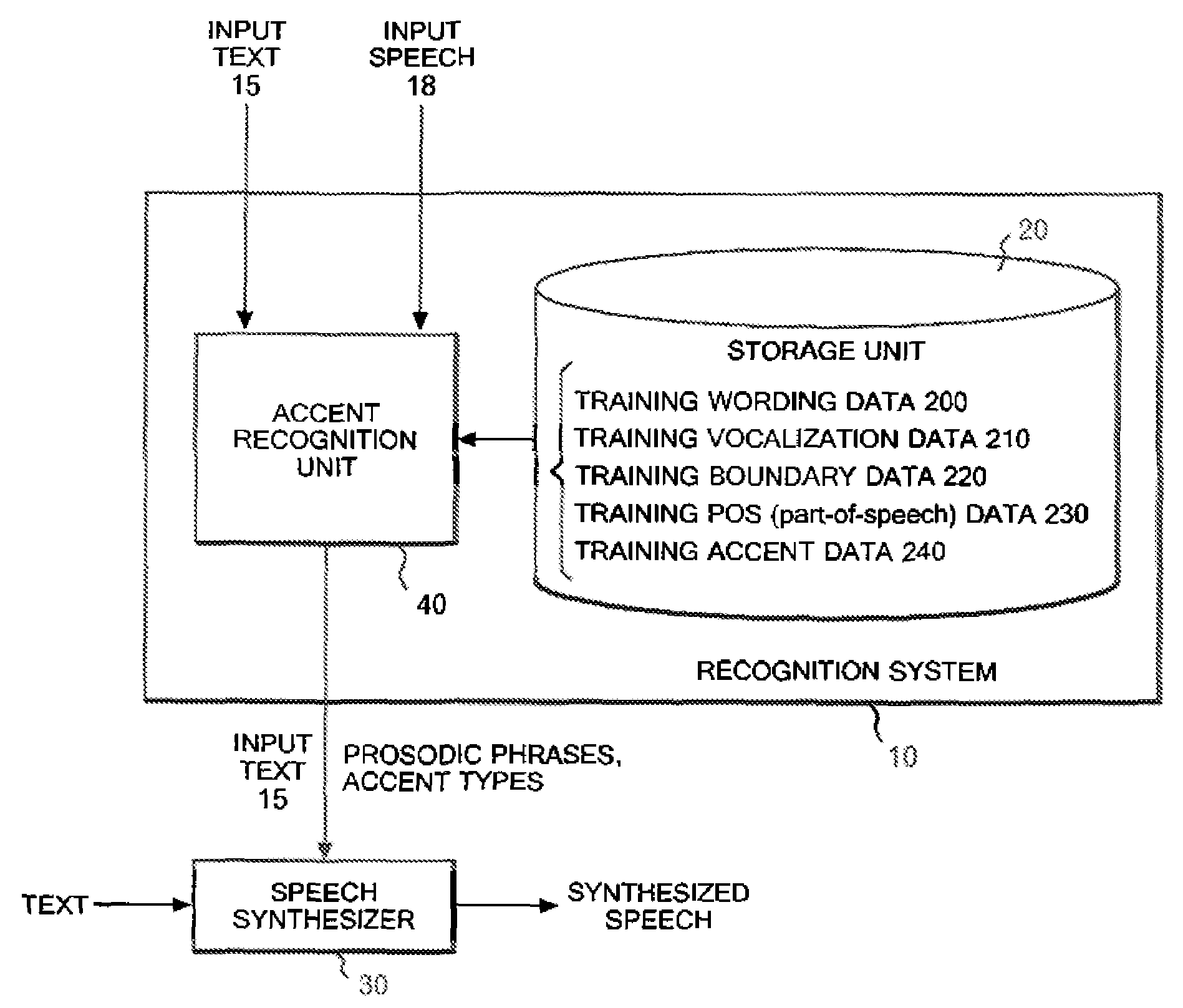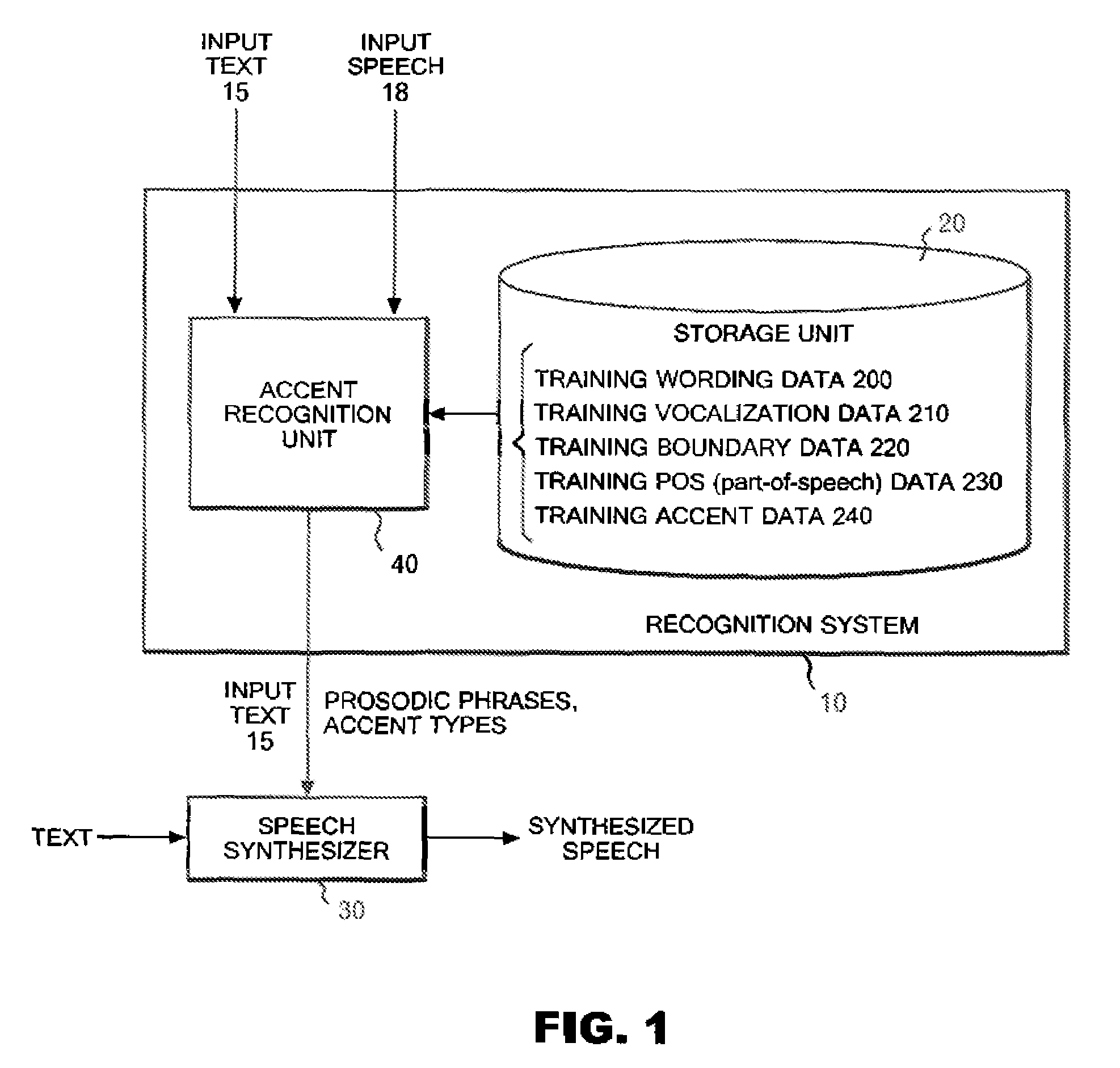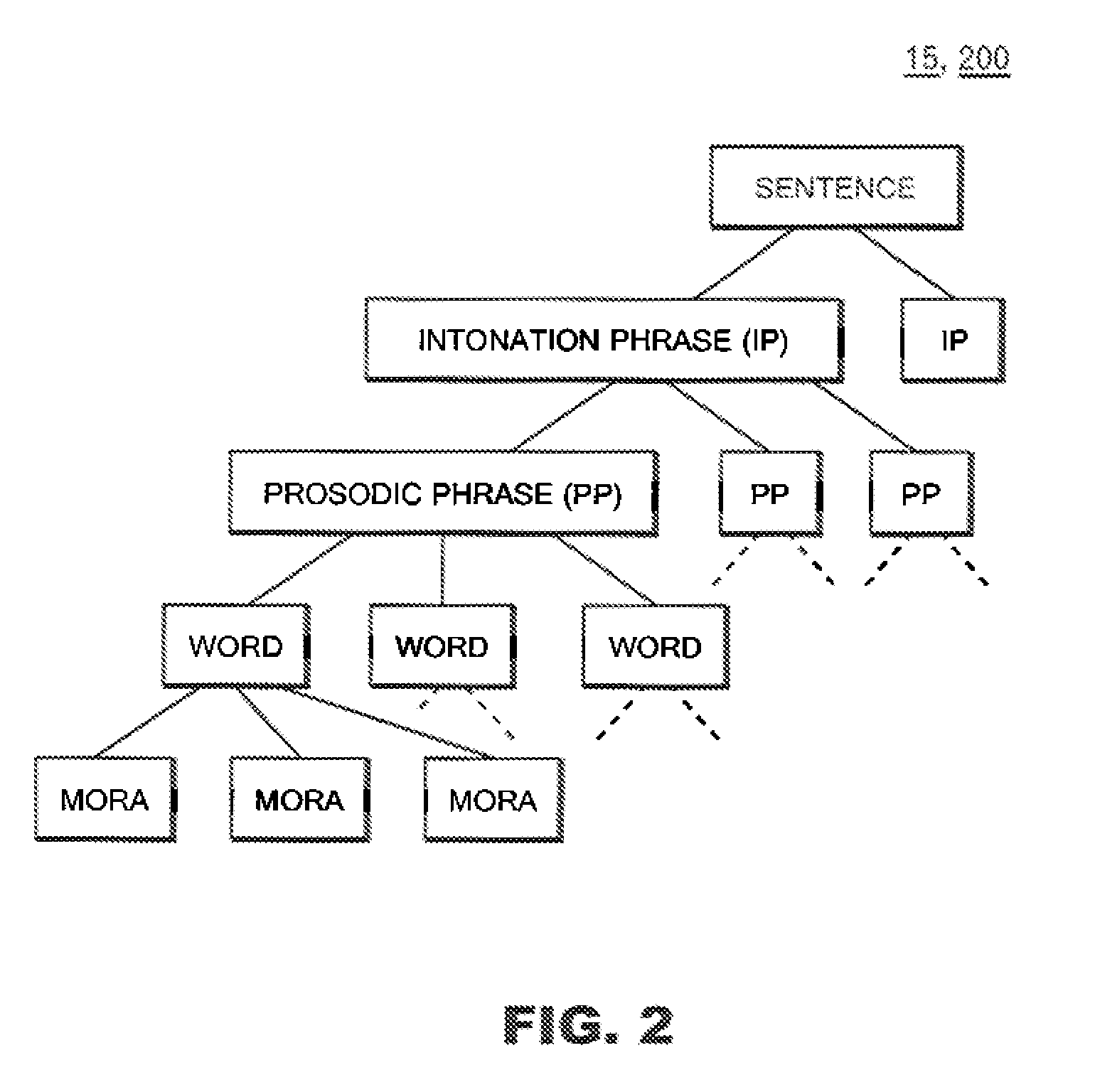Stochastic Syllable Accent Recognition
a syllable accent and accent recognition technology, applied in the field of speech recognition techniques, can solve the problems of insufficient accuracy to put the recognition to practical use, difficult to prepare a large amount of training data, and difficult to generate training data based on voice frequency data,
- Summary
- Abstract
- Description
- Claims
- Application Information
AI Technical Summary
Benefits of technology
Problems solved by technology
Method used
Image
Examples
Embodiment Construction
)
[0018]Although the present invention will be described below by way of the best mode (referred to as an embodiment hereinafter) for carrying out the invention, the following embodiment does not limit the invention according to the scope of claims, and all of combinations of characteristics described in the embodiment are not necessarily essential for the solving means of the invention.
[0019]FIG. 1 shows an entire configuration of a recognition system 10. The recognition system 10 includes a storage unit 20 and an accent recognition unit 40. An input text 15 and an input speech 18 are inputted into the accent recognition unit 40, and the accent recognition unit 40 recognizes accents of the input speech 18 thus inputted. The input text 15 is data indicating contents of the input speech 18, and is, for example, data such as a document in which characters are arranged. Additionally, the input speech 18 is a speech reading out the input text 15. This speech is converted into acoustic da...
PUM
 Login to View More
Login to View More Abstract
Description
Claims
Application Information
 Login to View More
Login to View More - R&D
- Intellectual Property
- Life Sciences
- Materials
- Tech Scout
- Unparalleled Data Quality
- Higher Quality Content
- 60% Fewer Hallucinations
Browse by: Latest US Patents, China's latest patents, Technical Efficacy Thesaurus, Application Domain, Technology Topic, Popular Technical Reports.
© 2025 PatSnap. All rights reserved.Legal|Privacy policy|Modern Slavery Act Transparency Statement|Sitemap|About US| Contact US: help@patsnap.com



